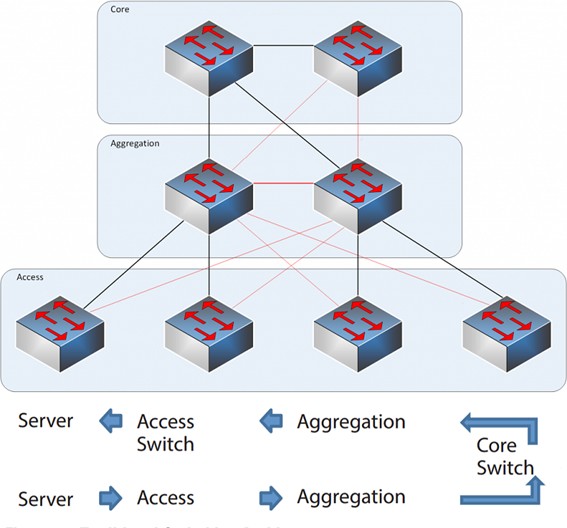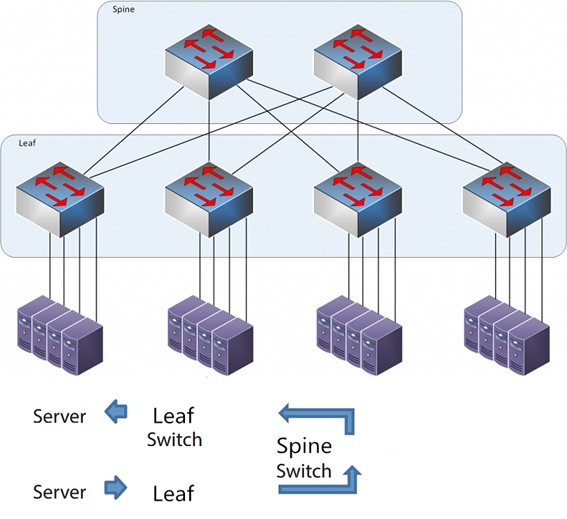Leaf Spine vs Traditional architecture

For many years datacenters have been built on a three-tier architecture. Over time, the leaf spine topology has become the main implementation of the datacenters network due to its reliability, scalability and better performance.
The traditional three-tier architecture consisted of the core layer which was responsible for transporting messages, the aggregation layer that provides redundancy, and the access layer for end users to connect themselves. They are all redundant and designed for north-south traffic (client to server). If there is a lot of east-west traffic (server-to-server), end devices connected to the same switch port can compete for bandwidth, resulting in poor response time for the users. In a datacenter this is not practical since the storage and computing servers are not found in the same physical location. Nowadays, companies are migrating their infrastructure to the cloud and it is increasingly common for them to have their servers far away, which is why east-west traffic is growing at the same rate.

As its name indicates, the leaf spine topology consists of two layers (leaf and spine). The spine layer is made up of switches that perform the routing and function as the backbone of the network. The leaf layer consists of multiple switches, each of them connected to end devices such as servers or storage devices, and also connected to each of the spine switches. In this way, every server can connect to each other through a spine switch and its corresponding leaf switches, as indicated in the graph below.

The benefits of the leaf spine architecture include an improved latency, less bandwidth bottlenecks, and thus more available bandwidth. Leaf spine takes advantage of all the connection links since each leaf is connected to all the spines, generating a more efficient structure without as many intermediaries as the three-layer architecture. Another advantage is the ability to add more hardware to expand the available bandwidth. For this, a spine switch is added and connected to all the leafs. Capacity is also improved, because the Spanning Tree Protocol is no longer required as in the 3-layer architecture. While there are also redundant paths in leaf spine, its routing is based on protocols such as equal cost multipath routing (ECPM), which balances traffic across all available paths while avoiding network loops.
To design a leaf spine network there are a few things to keep in mind. As in any network, the number of connections and the bitrate that we may need in an extreme case is a determining factor. It must be measured both in a north-south or east-west direction. The number of spine switches is also a variable that will be limited by the number of ports on the leaf switches.
In conclusion, when designing a datacenter, this architecture will have to be chosen over the traditional one due to the improvement in scalability, performance and its compatibility with the cloud.
Eduard Lecha and Matías Balzamo
Comments
Submitted by userDataCenter on Tue, 04/19/2022 - 13:13 Permalink
Given the prevalence of cloud and containerized infrastructure in modern data centers, east-west traffic continues to increase. East-west traffic moves laterally, from server to server. This change is mainly explained because modern applications have components that are distributed among more servers or virtual machines. That is why I have found this article very interesting, introducing the leaf-spine architecture, very popular in CPDs today.
Eduard Lecha-Puig
Add new comment